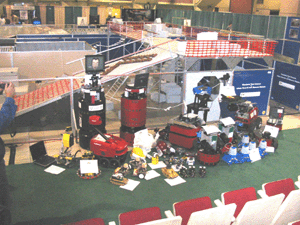

Last updated: Wed 31 Dec 2003 (Sklar and Green)
| The RoboCupJunior RESCUE is modeled after the RoboCup Senior League Rescue and the AAAI Rescue competition, designed by NIST (see http://www.isd.mel.nist.gov/projects/USAR/). | For RoboCupJunior, this translates into a scaled-down, modular arena, something like this: |

|

|